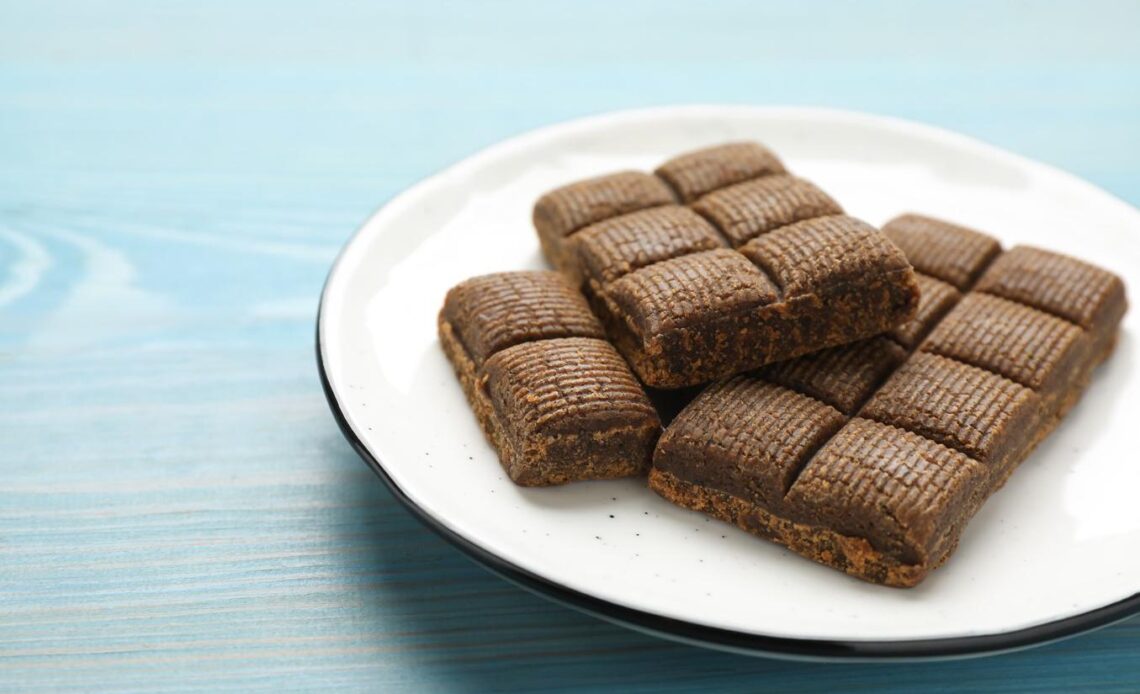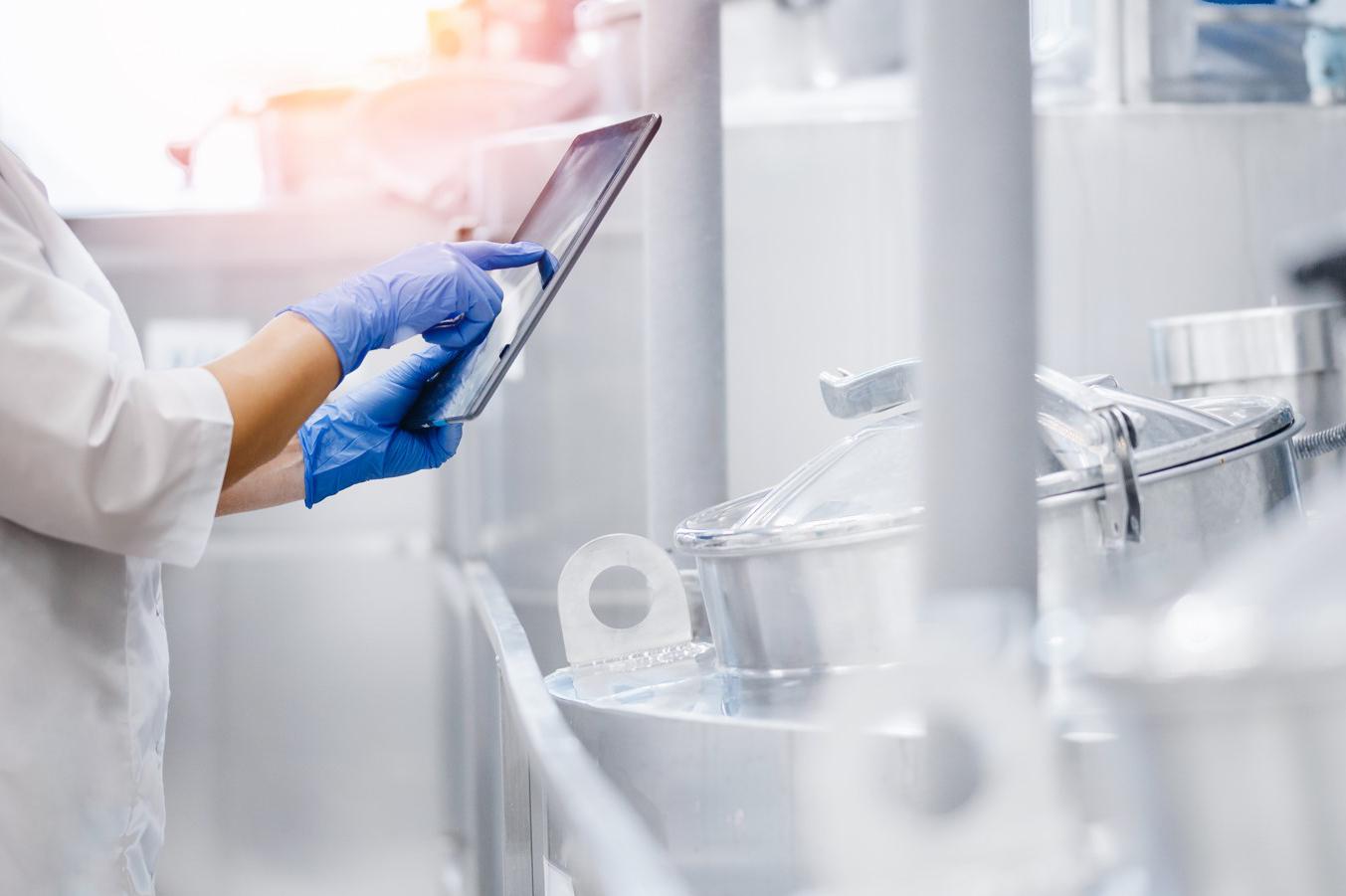
Dark brown hematogen bars can be bought almost anywhere. This is not a medicine, but a food supplement. In Soviet times, hematogen was given to children almost without fail. But modern medicine is not inclined to exaggerate its role. Let's figure out together with experts what hematogen is, how it is produced and what are its benefits and harms.
- What is this
- Composition and caloric content
- How they do it
- Benefit
- Harm
- Daily norm
Nikolay Smeshkov, director of Vozrozhdenie i Razvitie LLC (manufacturer of hematogen since 1993);
Yana Kartaeva, gastroenterologist, nutritionist of the BestDoctor group of companies.
What is hematogen
The word hematogen can be translated from ancient Greek as “giving birth to blood”
Hematogen is an iron-enriched food supplement that contains proteins obtained from the blood of cattle. (1). The most common and familiar form of hematogen is sweet nutritious bars or tiles that look like chocolate. Hematogen is also available in tablets, strips, and even liquid form.
Hematogen is not a prescription drug, it is a dietary supplement. (2). It can be bought both in a pharmacy and in any supermarket. The main purpose of hematogen is the prevention of iron deficiency anemia and general health promotion.
Hematogen was first produced in Switzerland at the end of the 19th century. The formula for the product was developed by Adolf Gomel to combat acute anemia. (3). In appearance and taste, that hematogen bore little resemblance to the modern one. It was a thick black mixture of bull's blood and eggs with a characteristic taste. Subsequently, the recipe changed greatly, as did the product itself. Modern hematogens differ in composition and taste. They are more like a delicacy with different aromas, cereals and other ingredients are added to them.
What is hematogen made of: composition and caloric content
The basis of hematogen is food black albumin (3). This is dried and stabilized whole blood of cattle or its elements. It serves as the main source of hemoglobin and iron in the finished product. In addition, it is black albumin that gives hematogen its characteristic dark brown hue and loose consistency. In its pure form, albumin has a very specific taste. Various additives help to “quench” it. Most often, these are sugar and flavorings.
Hematogenous — a high-calorie product. There are up to 400 kcal per 100 g of product. The bulk of them are carbohydrates (up to 80 g), proteins and fats account for 7 and 4 g respectively (4) The proportion of iron (albumin) is on average 5 mg.
What does hematogen consist of:
- black albumin;
- sugar;
- treacle;
- condensed milk.
Hematogen may contain various flavors, such as vanilla and strawberry. Additionally, the bars are enriched with vitamins and iodine. They are also covered with chocolate glaze, and raisins, sunflower seeds, and cereals are added to the product. There are Hematogen is sugar-free and is produced on the basis of fruit juices and agar-agar seaweed.
How Hematogen is Made

The production of hematogen consists of several stages, says Nikolay Smeshkov, Director of OOO Vozrozhdenie i Razvitie (a hematogen producer since 1993). The use of cattle blood is most likely due to traditions and production volumes. Some hematogen producers use deer and pig blood, says Nikolay Smeshkov.
The main stages of hematogen production:
- Boiling (cooking). For this purpose, tinned copper cooking kettles are used, into which all the constituent components are placed: beet sugar, whole condensed milk with sugar and molasses.
- Stirring and cooling the mass. This is necessary for the subsequent introduction of active ingredients.
- Adding Basic Elements: black food albumin, vitamins, microelements and other substances to improve health.
- Forming tiles. They come in different weights – 50, 40 and 30 g.
- Standing up. The finished tiles are kept on shelves for two to three days.
Benefits of Hematogen

Initially, hematogen is a product for the prevention and treatment of iron deficiency anemia. On the other hand, The recipe for modern bars is slightly inferior to the original in terms of iron concentration. But today's hematogen contains other substances that are important for the body. What are the benefits of hematogen:
- serves as a source of iron, as well as vitamins (provided that the product is enriched with them);
- can be a snack option, a small bar will help to quickly satisfy hunger;
- a healthier alternative to sweet chocolate bars.
Main indications for taking hematogen (3):
- replenishment of iron deficiency;
- general exhaustion of the body;
- chronic diseases with frequent bleeding;
- for injuries to soft tissues and bones;
- visual impairment;
- hypovitaminosis.
Harm of hematogen
Hematogen is not a medicine, but a food supplement, and this is written on the packaging of the bar, says Yana Kartaeva, a gastroenterologist and nutritionist at the BestDoctor group of companies. In her opinion, taking hematogen to avoid iron deficiency is a dubious idea. “You can get no more than 5 mg of iron from one hematogen bar. Unfortunately, this is not much. For example, a 100 g serving of chicken liver contains up to 8 mg of iron. At the same time, it is rich in protein and other microelements,” the doctor explains.
The second problem is sugar. One bar can contain up to 50 g of added sugar. Thus, with one bar you can get 2/3 of the recommended daily intake and more of added sugar, the doctor notes.
In addition, medical sources cite cases where people experienced the following side effects from regular intake of Hematogen: (3):
- disruption of the immune system;
- nervousness;
- memory impairment;
- decreased attention.
How often can you eat hematogen
The daily dose of hematogen is different for children and adults. (5):
- 3-7 years – 20 g
- 7-14 years – 40 g
- adults – 50 g.
Contraindications to the use of hematogen
Contraindications include:
- diabetes,
- individual intolerance to certain components of the product,
- pregnancy and lactation,
- overweight.
Store hematogen in a dry and dark place. On average The shelf life is one year.
